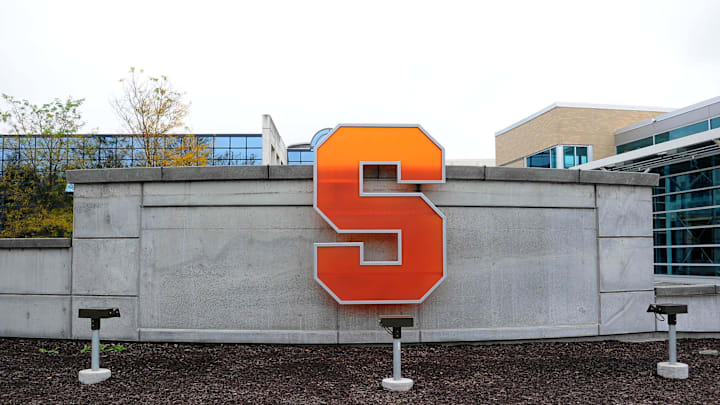Let me start out this column by stressing that I'm 144 percent in favor of Syracuse Orange student-athletes and their peers around the country having the ability to earn endorsement income from their names, images and likenesses.
I'll also add here that when a player commands hundreds of thousands of dollars, or even millions of dollars, good for that student-athlete. Earn what the market will provide.
At the same time, and I'm probably not alone in this sentiment, but some of these NIL deals in major conferences - especially in basketball and football - seem to be getting out of hand, and my fear is that the marketplace will prove unsustainable.
Great for the players but schools better come up with a plan soon because this isn't sustainable https://t.co/ZrJKBoPoUn
— Kevin Wall (@kwallcuse) May 13, 2024
Case in point, on Monday, ESPN's Jonathan Givony published a piece stating that Utah State senior forward Great Osobor was transferring to Washington, which is moving from the Pac-12 Conference to the Big Ten Conference.
Some might be upset by players making 2 million dollars in NIL (to be clear, we reviewed documents prior to publishing), but it shows how quickly college sports are evolving. For Great Osobor, this is life altering money for him and his family, which is a beautiful thing. pic.twitter.com/to9rHsflMT
— Jonathan Givony (@DraftExpress) May 13, 2024
Givony's report noted that Osobor, rated as four stars and in the top 20 overall in national transfer rankings by several recruiting services, has NIL deals in place valued at $2 million.
Will the Syracuse Orange and other power-conference teams be able to sustain these levels of NIL?
First and foremost, congrats to Osobor, who has one year of college eligibility left. That's some big-time coin. He was the Mountain West Conference player of the year this past term, and Givony said he committed to the Huskies "over similar opportunities from Louisville and Texas Tech."
It's also important to point out that Danny Sprinkle was Osobor's head coach at Utah State, and Sprinkle in late March was named the head coach of Washington, replacing Mike Hopkins.
My concern here is whether collectives and other donors who provide financial backing for NIL, whether at the 'Cuse or elsewhere, can keep up with these kinds of deals. Now, I'm not suggesting that the bevy of college transfers, returning players or high school commits (once they get to college) are earning this level of NIL income.
But even still, Givony wrote in part, "Osobor's lucrative NIL valuation represents the sea change in college sports, where top returning players or transfer portal recruits are now drawing offers exceeding $1 million. That's especially the case for versatile, experienced frontcourt players like Osobor, who are difficult to come by."
Whether Osobor is being "overpaid" or not is something that people will debate. If he or others are able to attract that kind of NIL money, will we just continue to see NIL deals being offered out there climb higher and higher and higher?
Doesn't reset the market at all. This is a ridiculous overpayment for a student-athlete ranked No. 55 on @EvanMiya's portal list. He's receiving 4-5x the amount that transfers +/- 15 spots are getting. https://t.co/HdZjQDaor4
— Jason Belzer (@JasonBelzer) May 13, 2024
How does Orange United, the commercial NIL collective that supports all 'Cuse sports, and its peers keep up with this?
I noted in a column last week that a deal was being finalized for Syracuse basketball to compete at a tournament in Las Vegas in 2025 that will provide the Orange and other participating schools with lucrative NIL payouts. That's a highly encouraging development for the 'Cuse.
Part of the issue, from my perspective, is that the regulation of NIL is a mess. It's not uniform around the country. The NCAA is incompetent. "Pay-for-play" is likely rampant. And I have no clue what the end result will look like.
To reiterate, a congrats to Osobor on getting paid. I got no issue with that. I just worry that if we see more and more players commanding $1 million, $2 million or even more than that in annual NIL income, collectives on the Hill and nationwide could run into serious issues with regard to sustainability.
